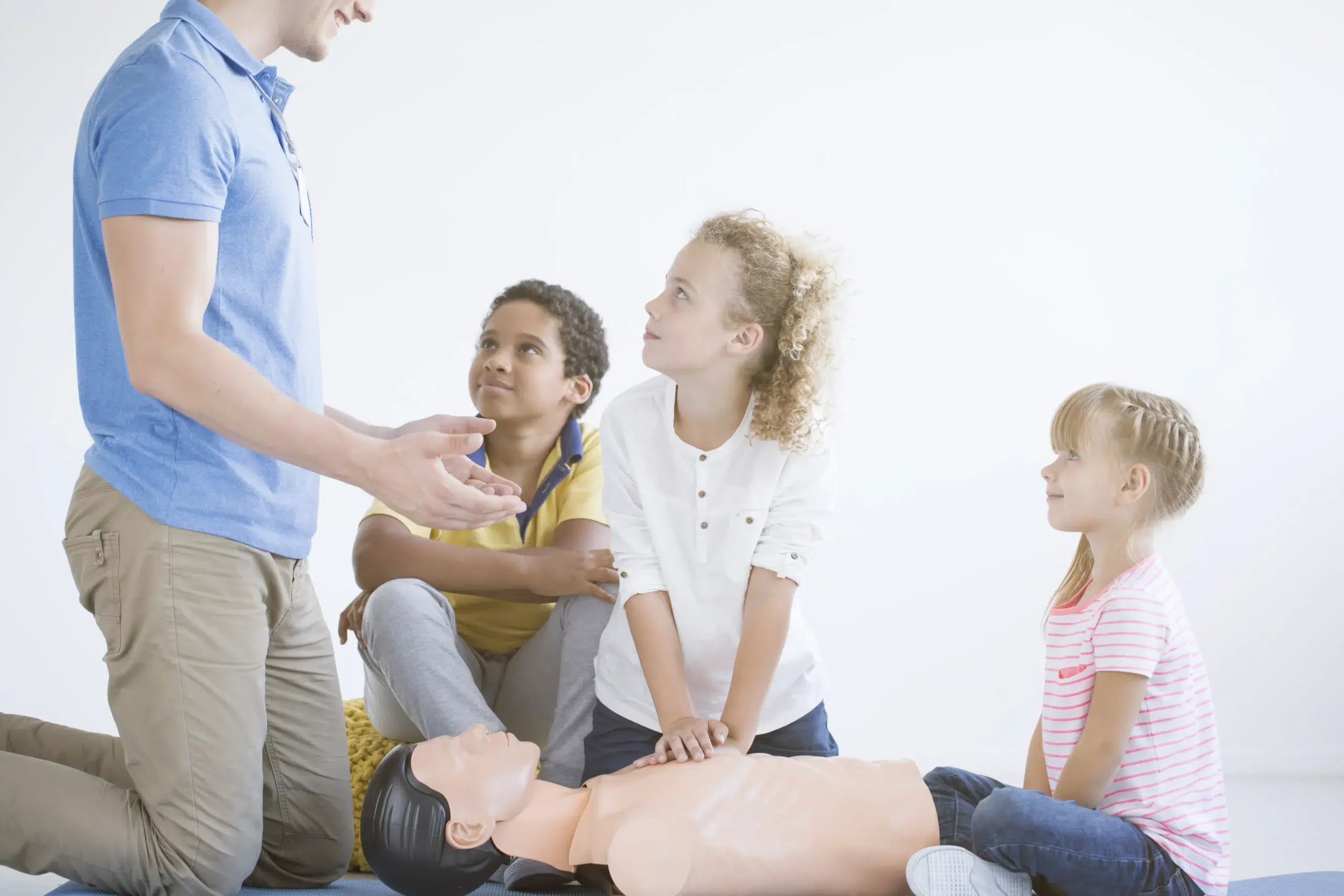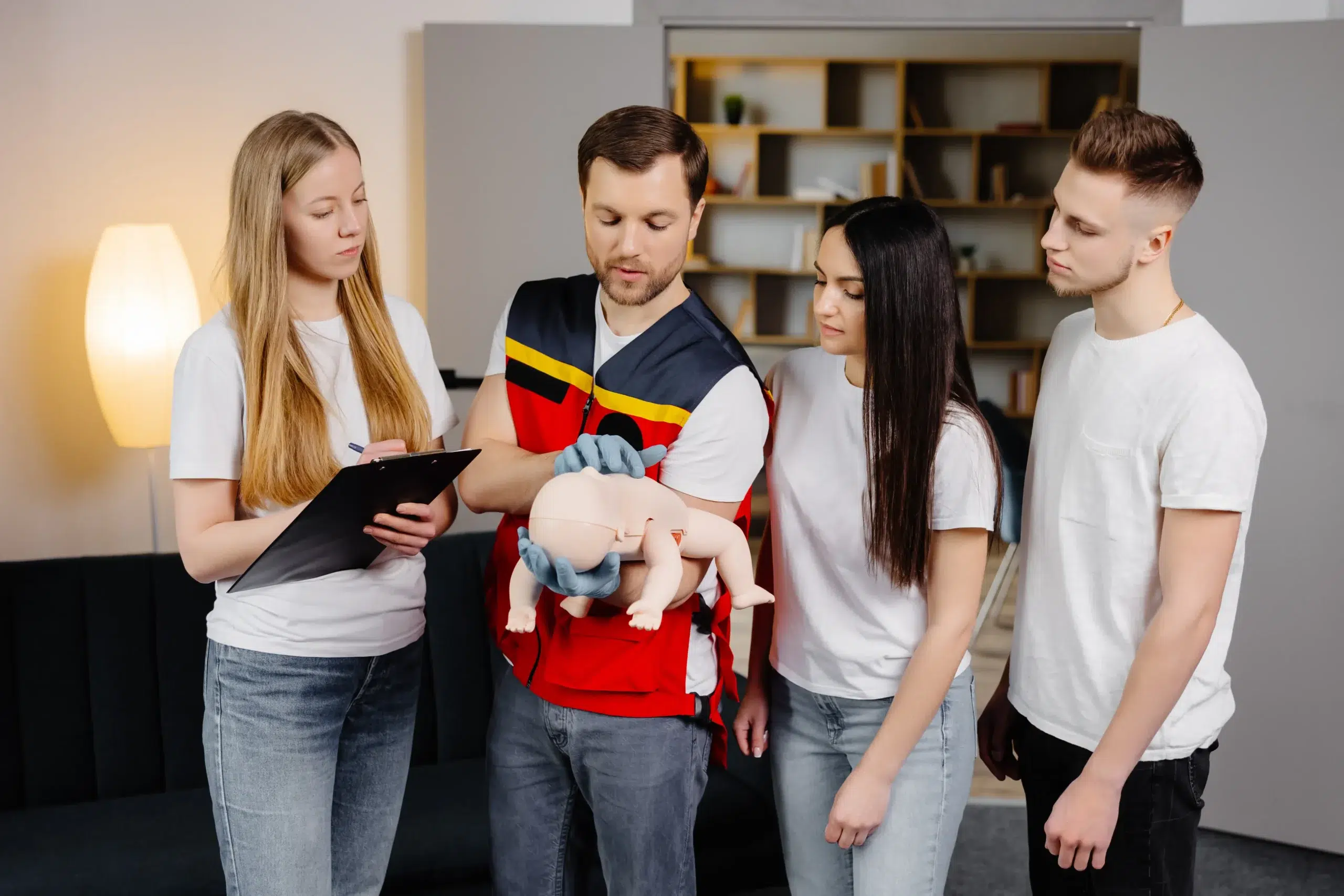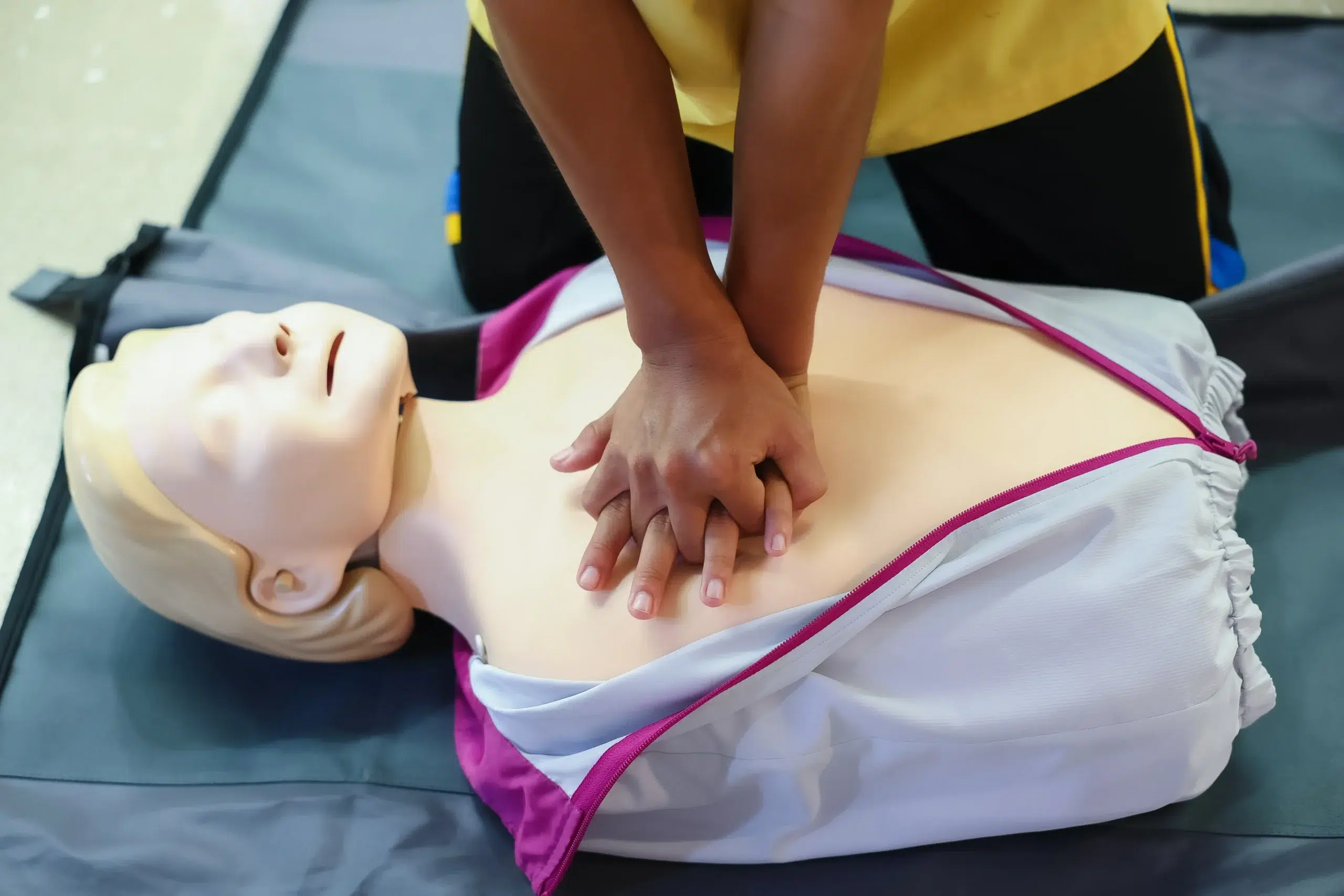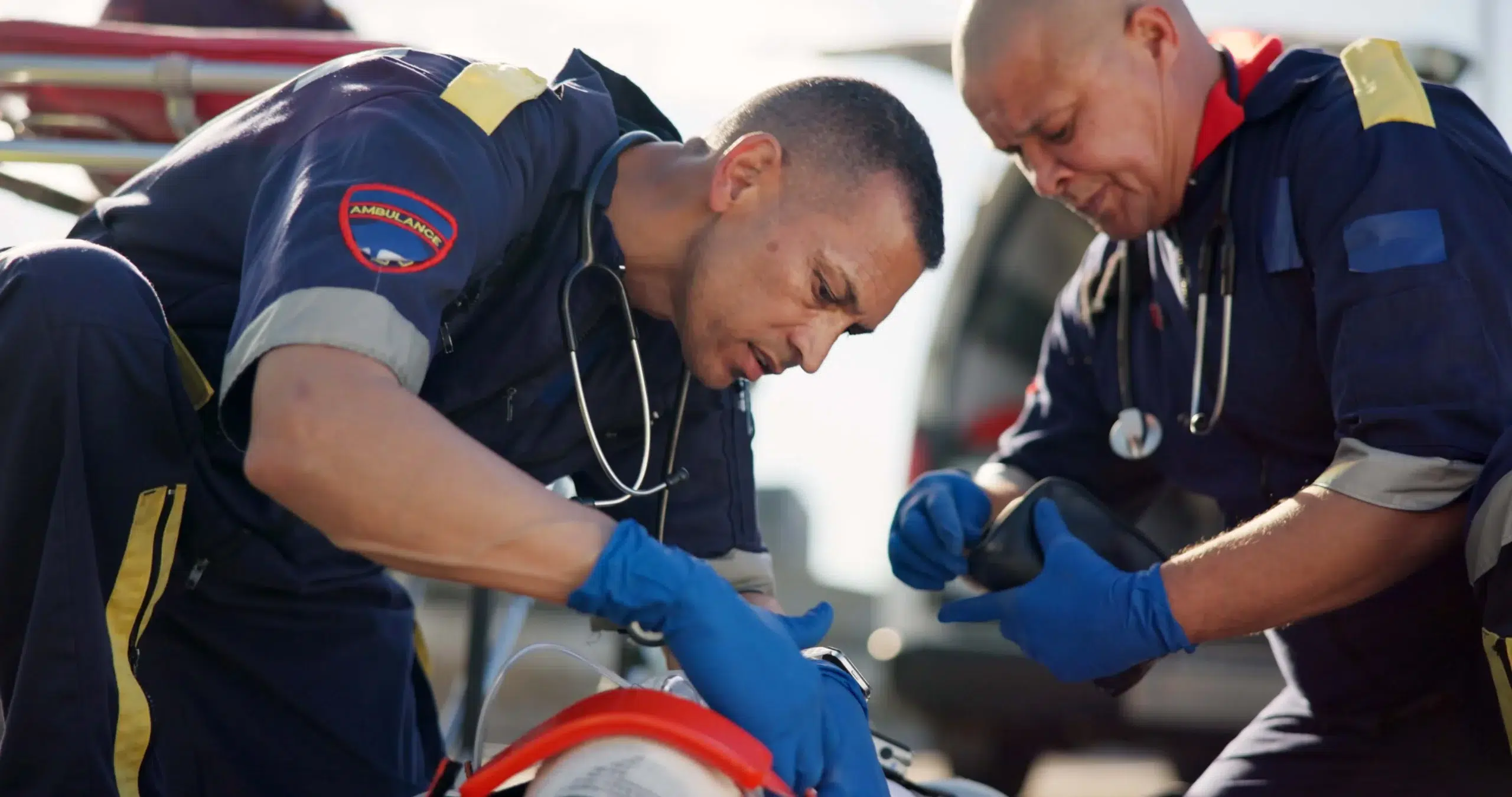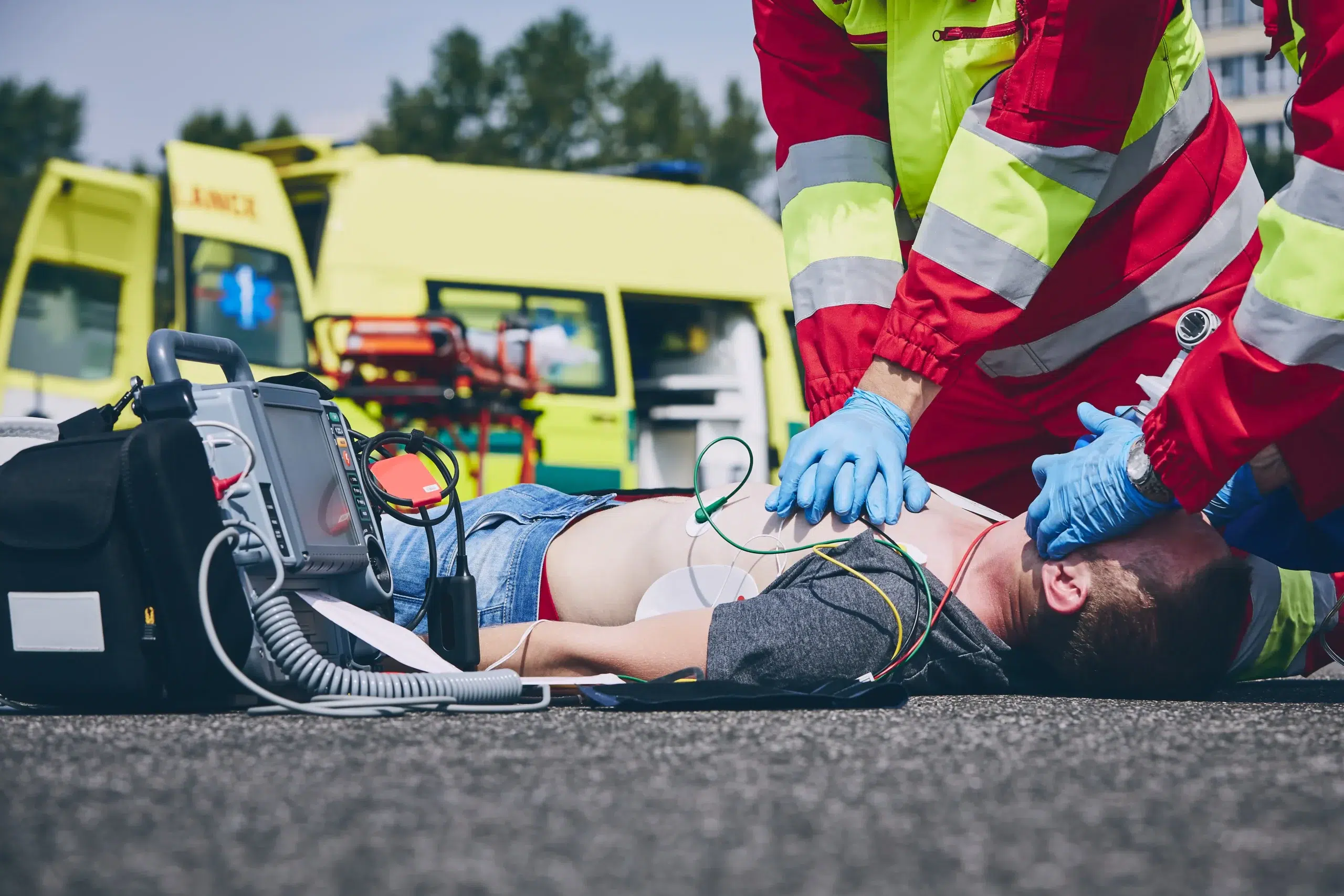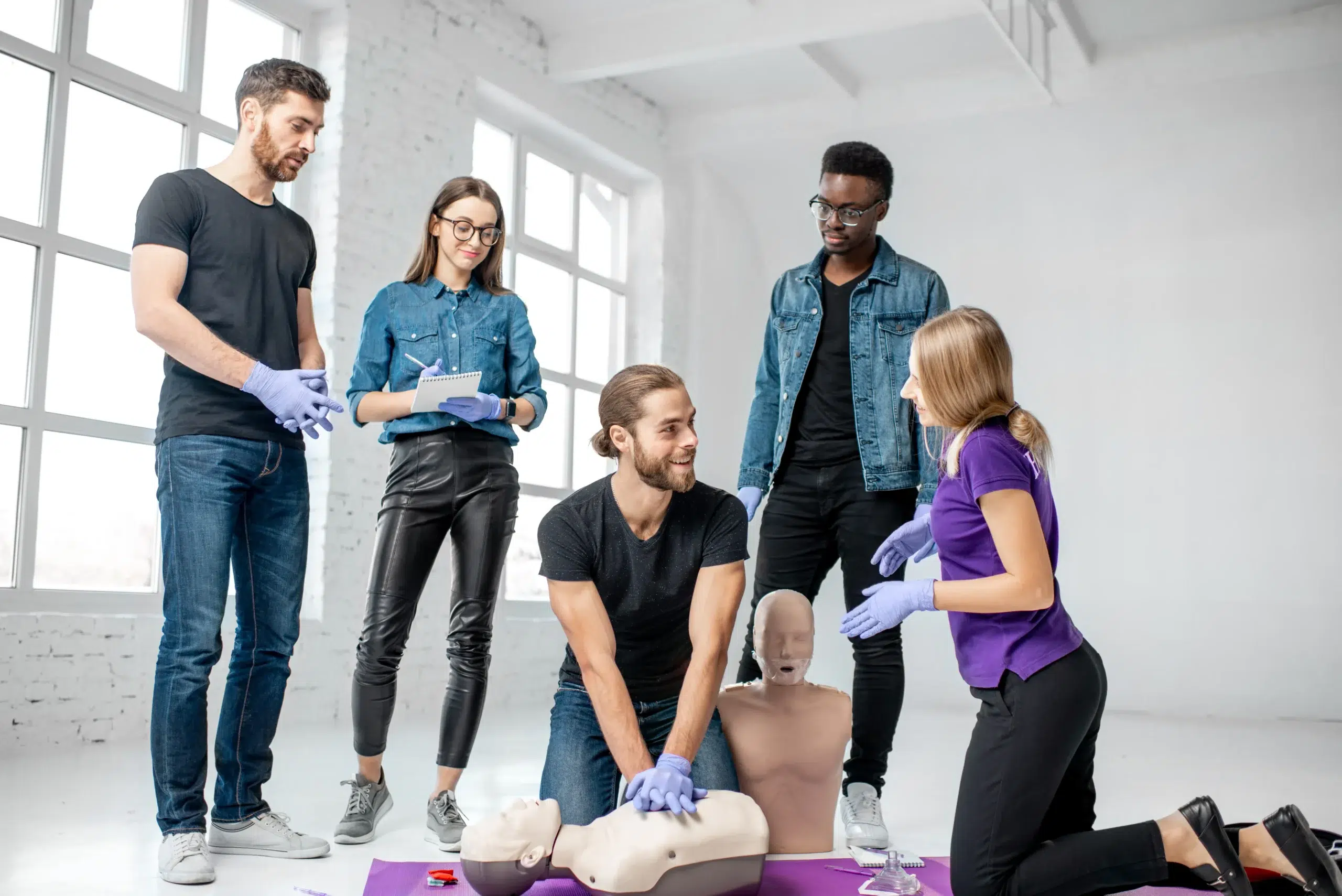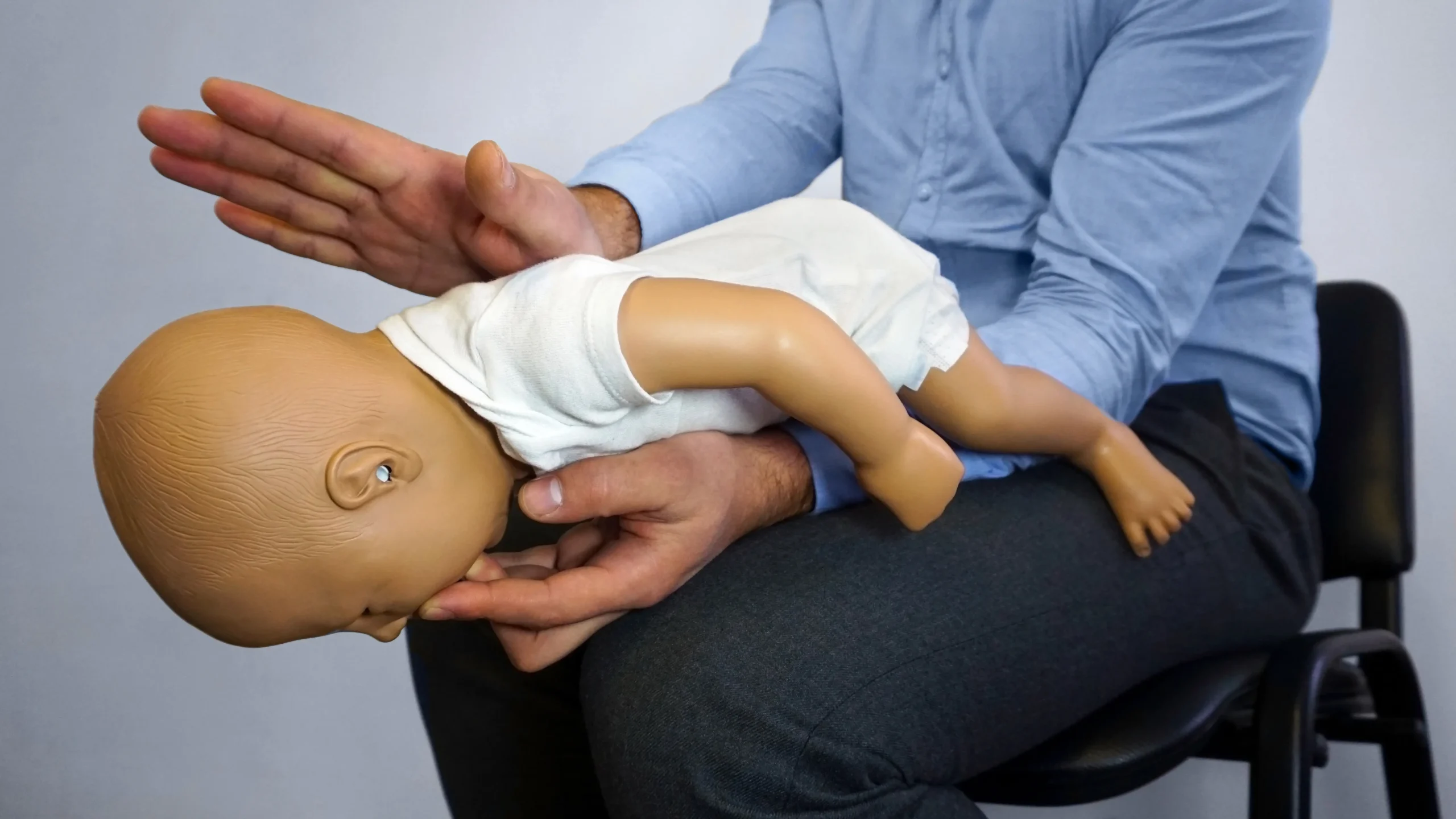Medical emergencies can happen anytime, anywhere. Being equipped with the skills to respond effectively can make all the difference. That’s where BLS, or Basic Life Support, comes in. This comprehensive guide covers everything from the basics of BLS to finding “BLS classes near me” and getting certified. Whether you’re a healthcare professional or simply someone who wants to be prepared, this post will walk you through the process of finding the right BLS course, understanding the different certification options, and mastering the essential skills to provide critical care in emergencies.
Key Takeaways
- BLS certification provides essential life-saving skills. It goes beyond basic first aid, equipping you with the skills to handle medical emergencies confidently. Consider BLS training whether you’re in healthcare or want to be prepared for anything.
- Finding the right BLS course requires research. Consider the provider’s reputation, course format (in-person, online, or blended), and cost. Hands-on training is crucial for mastering practical skills.
- Choose the BLS course that aligns with your goals. Options range from basic and renewal courses to instructor training. Select a format that fits your learning style and schedule.
What is BLS?
BLS stands for Basic Life Support. It’s a critical level of medical care used in emergencies like heart attacks, strokes, near-drowning incidents, or choking. BLS focuses on maintaining a patient’s airway, breathing, and circulation until more advanced medical help arrives. It goes beyond basic first aid, encompassing techniques like CPR, using an AED, and relieving airway obstructions.
What BLS Is and Why It Matters
BLS training gives you the skills to respond confidently during those first few critical minutes of a medical emergency. You’ll learn how to perform CPR and use an AED, essential skills whether you’re a healthcare professional or someone who wants to be prepared for anything. It also covers a broader range of skills than standard CPR training, including airway management techniques like the head-tilt-chin-lift. This more comprehensive approach makes you a more effective first responder. Having these skills can truly make a difference, potentially saving a life.
Who Needs BLS Certification?
BLS certification is crucial for healthcare providers like doctors, nurses, paramedics, and other medical professionals. It’s often a job requirement and ensures they can provide immediate care in emergencies. But BLS certification isn’t just for healthcare professionals. Anyone who might need to respond to a medical emergency, such as lifeguards, teachers, coaches, or even parents, can benefit from this training. If you’re interested in learning these life-saving skills, check out our BLS courses in Newark. We offer a low price guarantee and convenient schedules to make getting certified as easy as possible. We also offer discounted group classes for businesses or organizations looking to train multiple people.
Find BLS Classes Near You
Finding the right BLS class involves a bit of research, but it’s well worth the effort. These tips will help you find a course that fits your needs and sets you up for success.
Search Online Effectively
Start your search online using terms like “BLS classes near me” or “BLS certification [your city/region]”. This will give you a good starting point and help you narrow down your options. When selecting a BLS provider, consider factors like course format (online, in-person, or blended), cost, and the training center’s reputation. Our BLS courses in Newark page is a great example of how you can filter by location and date. This makes it easy to find a class that fits your schedule.
Evaluate Course Providers
Not all BLS courses are created equal. The best classes offer hands-on, in-person training, not just online options. This is vital for learning proper CPR and AED techniques. Look for providers who emphasize practical skills and offer plenty of opportunities for practice. Consider factors like instructor experience and class size. Smaller classes often allow for more personalized attention from the instructor. If you’re in or near Newark, California, check out our CPR and first-aid certification courses for a program that prioritizes hands-on learning. We also offer discounted group classes for workplaces or community organizations.
Check Reviews and Testimonials
Before committing to a course, take the time to read reviews and testimonials from past students. These can offer valuable insights into the quality of instruction, course organization, and overall learning experience. Pay close attention to reviews mentioning hands-on training and BLS certification specifically. Look for comments about the instructors’ teaching style and the effectiveness of the skills practice. A provider’s low price guarantee can also be a good indicator of their commitment to providing accessible training. This ensures you’re getting quality instruction at a fair price.
Types of BLS Certification Courses
Understanding the different types of BLS certification courses available will help you choose the right one for your needs. Whether you’re a healthcare professional, a student, or someone who wants to be prepared for emergencies, there’s a BLS course designed for you. Safety Training Seminars offers a variety of courses, including CPR and First-Aid certification.
Basic BLS Courses
Basic Life Support (BLS) training gives you the essential skills to respond to medical emergencies. These courses cover core techniques like CPR, using an AED, and airway management. A basic BLS course equips you to act confidently in critical situations, whether you’re a healthcare worker or not. This BLS training guide offers a helpful overview. Our low price guarantee ensures affordable training options.
BLS Renewal Courses
If your BLS certification is expiring, you’ll need a renewal course to stay current. BLS renewal courses refresh your skills and knowledge, making sure you’re prepared for any medical emergency. These courses often cover more advanced techniques and provide a deeper dive than the initial BLS course. This OSHA-approved BLS certification guide offers additional information on BLS renewal requirements. We also offer discounted group classes for renewals.
BLS Instructor Training
Want to teach BLS? BLS instructor training courses prepare you to lead and guide others in Basic Life Support. These programs equip you with the skills and knowledge to effectively teach BLS courses, empowering you to share these life-saving techniques with your community. This pilot study highlights the effectiveness of condensed instructor training formats. Consider becoming a certified BLS instructor if you’re passionate about BLS and want to make a difference. Contact us today to learn more about our instructor training options.
Top BLS Class Providers
Finding the right BLS class can feel overwhelming with so many options available. This section breaks down some of the top BLS class providers to help you make an informed decision.
American Heart Association (AHA)
The American Heart Association (AHA) is a leading authority on cardiovascular health and CPR training. AHA BLS certification is widely recognized and accepted. They offer various learning formats, including in-person classes, online modules, and blended learning options that combine online coursework with hands-on skills sessions. This flexibility allows you to choose the format that best fits your schedule and learning style. AHA courses cover essential life-saving skills, such as high-quality CPR, using an AED, and relieving choking.
American Red Cross
The American Red Cross is another reputable organization offering BLS certification courses. Like the AHA, the Red Cross provides various course formats, including in-person, online, and blended learning. Their BLS classes equip participants with the knowledge and skills to respond to life-threatening emergencies, including CPR, AED use, and first aid basics. The Red Cross also offers instructor training for those interested in teaching BLS courses.
Safety Training Seminars
Safety Training Seminars offers a range of AHA-certified courses, including BLS certification. They provide in-person classes, online courses, and blended learning options to cater to different learning preferences. Safety Training Seminars focuses on providing high-quality, accessible training with a low-price guarantee and extended customer service hours. They serve various locations and offer group discounts, making them a convenient and cost-effective option for individuals and organizations. You can find their BLS courses in Newark, CA, along with other locations. Safety Training Seminars is a woman-owned business and authorized AHA Training Center.
Local Hospitals and Medical Centers
Many local hospitals and medical centers offer BLS certification courses to both healthcare professionals and the general public. These courses are often taught by experienced medical professionals and provide hands-on training in a realistic healthcare setting. Check with hospitals and medical centers in your area to see if they offer BLS certification courses and what formats they provide. They may also offer specialized courses tailored to specific healthcare disciplines.
Choose the Right BLS Training Format
Finding the right BLS training format depends on your learning style, schedule, and budget. Let’s break down the pros and cons of each option so you can make the best choice.
In-Person Classes: Pros and Cons
In-person BLS training offers a hands-on learning experience perfect for those who thrive in interactive environments. You’ll practice skills like CPR and AED use with certified instructors, receive immediate feedback, and ask questions in real-time. This direct interaction is invaluable for mastering proper techniques and building confidence in medical emergencies. Plus, connecting with other students can create a supportive learning community. Safety Training Seminars emphasizes this hands-on approach, recognizing the importance of practical training for effective emergency response. However, in-person classes require a fixed schedule, which can be challenging if you have limited availability.
Online Certification: Benefits and Limitations
Online BLS training provides flexibility and convenience. You can learn at your own pace, anytime, anywhere. This format is ideal if you’re juggling multiple commitments or prefer self-directed learning. Online courses often incorporate interactive elements like videos and simulations. However, keep in mind that the American Heart Association requires an in-person skills assessment, so a fully online option isn’t available for AHA certification. This means you’ll still need to schedule an in-person session. For questions about the online portion, you can find insights from other students on forums like AllNurses.
Blended Learning: Combining Online and Hands-On
Blended learning offers the best of both worlds. You’ll complete the coursework online through programs like HeartCode BLS, enjoying the flexibility of self-paced learning. Then, you’ll attend an in-person skills session to practice and demonstrate your skills. This format allows you to absorb the material at your own speed and still benefit from the hands-on guidance and feedback of an instructor. This blended approach ensures comprehensive training and allows you to obtain your AHA BLS Provider certification upon successful completion of both components.
What to Expect in a BLS Class
So, you’ve decided to get BLS certified—great choice! Knowing what to expect can help you feel prepared and confident going into your class. Here’s a breakdown of a typical BLS course:
Course Content and Key Skills
BLS classes cover essential life-saving skills. You’ll learn how to perform high-quality CPR for adults, children, and infants, including how to use an automated external defibrillator (AED). Airway management techniques are also a key component, teaching you how to help someone who is choking. These skills equip you to respond effectively in various medical emergencies, whether you’re a healthcare professional or simply preparing for everyday life. Many courses, like those offered at Safety Training Seminars, also include a section on first aid basics.
Duration and Time Commitment
Most BLS courses take about three hours to complete, although the exact time can vary slightly depending on the provider. This relatively short time commitment makes it easy to fit BLS training into your schedule. Your BLS certification is valid for two years, after which you’ll need a renewal course to stay current.
Exam Format and Requirements
The American Heart Association (AHA) BLS certification process typically involves two parts: an online cognitive component and an in-person skills assessment. You’ll complete the online portion at your own pace before attending the in-person session, where instructors will evaluate your practical skills. This hands-on assessment ensures you can perform the techniques correctly. Upon successful completion of both components, you’ll receive your AHA BLS Provider certification card. The in-person skills check is essential—there isn’t a fully online option for AHA BLS certification.
Cost of BLS Certification
Knowing the cost of BLS certification is an important part of choosing the right class. Several factors influence pricing, including the course format, your location, and any available discounts.
Average Pricing for Different Formats
In-person BLS certification courses typically cost around $55 for both initial certification and recertification. Online BLS certification usually runs a bit higher, averaging around $85. The difference in price often reflects the value of hands-on instruction and immediate feedback you receive in a classroom setting. Consider which format best suits your learning style and budget. Safety Training Seminars offers a low price guarantee to ensure you’re getting the best value for your BLS course.
Group Discounts and Promotions
If you’re certifying a team or group, look for training centers that offer group discounts. These discounts can significantly lower the per-person cost, making it more affordable to train multiple employees or members at once. Contact providers directly to inquire about current promotions and package deals.
Additional Fees
Keep an eye out for potential extra costs beyond the course fee itself. Some in-person classes may require a textbook, which could add around $20 to your total. Online courses often don’t require a physical textbook, potentially saving you some money. Always confirm any additional fees with the provider before registering to avoid surprises.
Get BLS Certified
Getting your BLS certification is straightforward. This section breaks down the steps, from registration to maintaining your certification. At Safety Training Seminars, we simplify the process, offering daily certification courses in Newark, along with discounted group classes and student discounts.
Steps to Certification
First, find an accredited training center like Safety Training Seminars, an AHA Training Center, or your local Red Cross. Browse available BLS courses and pick one that fits your schedule and learning style. You can choose from in-person, blended learning (combining online coursework with in-person skills sessions), and online renewal courses. After choosing a course, register and complete any necessary paperwork. Some providers require upfront payment, while others offer payment plans.
Hands-On Skills Assessment
While some parts of BLS training may be online, the American Heart Association requires an in-person skills assessment for certification. This involves demonstrating CPR, AED use, and other essential BLS skills to a certified instructor. This hands-on component ensures you can apply your knowledge in real-life emergencies. HeartCode BLS is one example of blended learning that combines online coursework with a required hands-on skills session.
Maintain Your Certification
BLS certifications are typically valid for two years. To maintain your credentials and stay current with the latest guidelines, recertify before your certification expires. Recertification courses are shorter than initial certification courses and focus on refreshing your knowledge and skills. A current or recently expired certification is usually required for a recertification course. Check with your chosen provider, whether it’s the Red Cross or another organization, for their specific requirements.
Common BLS Misconceptions
It’s easy to get confused about BLS certification, especially with so much information online. Let’s clear up a few common misconceptions.
BLS vs. CPR
Many people think Basic Life Support (BLS) and CPR are the same. They’re related, but not identical. BLS is like CPR’s more advanced cousin. BLS certification is designed for healthcare providers like doctors, nurses, and EMTs. It includes everything in CPR training, plus more advanced techniques for managing cardiac arrest, respiratory distress, and airway obstructions. CPR focuses on the essentials of chest compressions, rescue breaths, and AED use—perfect for anyone, even if you’re not in healthcare.
Online-Only Certification Myths
Another misconception? You can get fully certified in BLS online. Some online training is available, but the American Heart Association (AHA) requires an in-person skills check. You might do the coursework online, but demonstrating your skills in person is a must for certification. This hands-on part ensures you can perform BLS correctly in a real emergency.
Renewal Requirements
Finally, there’s often confusion about BLS certification renewal. BLS certifications are usually good for two years. To recertify, take a renewal course before your current certification expires, or very soon after. This keeps your skills sharp and ensures you’re following the latest guidelines. Staying current is key for effective care and maintaining your professional standing.
Choose the Right BLS Class
Not all BLS classes are created equal. Finding the right one for you depends on several factors. Take the time to research and ask questions—it’s an investment in your skills and career.
Factors to Consider
When selecting a BLS provider, consider factors like course format (online, in-person, or blended), cost, and the training center’s reputation. Location matters too. Choose a class that’s conveniently located, or offered online if commuting isn’t feasible. Think about your learning style. Do you thrive in a traditional classroom setting or prefer the flexibility of online learning? Also, check what’s included in the course fee. Some providers bundle materials like textbooks and CPR masks, while others charge separately.
Align the Course with Your Needs
BLS certification goes beyond basic CPR, covering a broader range of skills and providing more in-depth training. Make sure the course aligns with your specific job requirements or personal goals. If you’re a healthcare professional, hands-on training is essential. The best classes offer in-person training, not just online options. This is vital for learning proper CPR and AED techniques. If you need BLS for your job, verify that the course you choose meets OSHA guidelines and is accepted by your employer.
Questions to Ask Before Enrolling
Before you sign up, ask a few key questions. Check online reviews to see what past students say about the instructors, class organization, and overall experience. Inquire about class sizes. Smaller classes often allow for more personalized instruction and feedback. Find out how long it takes to receive your certification card after completing the course. Same-day certification is a big plus. And don’t hesitate to ask about the instructors’ credentials and experience. A knowledgeable and engaging instructor can make all the difference in your learning experience. Finally, confirm the provider’s refund policy in case your plans change.
Related Articles
- Find BLS Training Near Me: Top Providers & Courses – Newark CPR Classes
- BLS Certification in San Jose: Your 2024 Guide – Newark CPR Classes
- BLS Courses in Fremont: Your Complete Guide – Newark CPR Classes
- BLS for Healthcare Providers in Newark: A Practical Guide – Newark CPR Classes
- Common CPR Myths Debunked for Better Emergency Response
Frequently Asked Questions
Is BLS the same as CPR? No. BLS builds upon CPR, adding advanced skills like airway management and AED use. Think of CPR as the foundation, while BLS provides a broader skillset for healthcare providers and those in specialized roles.
Can I get BLS certified completely online? Not for American Heart Association (AHA) certification. While some coursework might be online, you’ll need an in-person skills assessment to demonstrate your abilities and receive your AHA BLS Provider card.
How long does BLS certification last, and how do I renew it? BLS certification is valid for two years. To renew, take a recertification course before or shortly after your current certification expires. Renewal courses are typically shorter, focusing on refreshing your skills and knowledge.
What should I look for when choosing a BLS course? Consider factors like the training center’s reputation, instructor experience, course format (online, in-person, or blended), and cost. Look for hands-on practice opportunities and convenient class locations or online options. Also, check if the course meets any job-specific requirements.
How much does BLS certification cost? Costs vary depending on the provider, location, and course format. In-person classes often range around $55, while online or blended learning options might be slightly higher. Look for providers offering group discounts or a low-price guarantee. Always confirm any additional fees for textbooks or materials.
